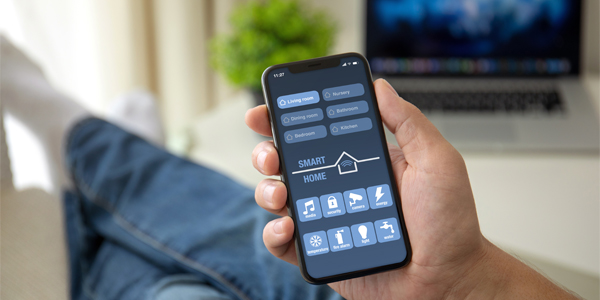
If you've recently embraced smart home technology to simplify your life, you may still be a bit confused about certain aspects.
You may know that products like smart light bulbs and smart outlets can operate independently through an app on your mobile device. But if you have multiple devices from different manufacturers, you’ll have to switch between multiple apps. That’s a hassle that doesn’t save you time and can complicate your smart home experience.
What’s more, some smart devices can’t be controlled directly through an app and require something called a smart home “hub” to communicate with your mobile device.
What Is a Smart Home Hub?
A smart home hub is a gadget that connects the Internet of Things (IoT) devices within your home. Many hubs use Zigbee or Z-Wave protocol, which operates via wireless radio frequencies (RF) to create a mesh network of devices that can communicate with each other and with your mobile device.
This offers control of your smart home products that operate on the same frequency as the hub. Other hubs operate through your household’s Wi-Fi network.
Some hubs, like the Wink Hub 2 and the Samsung Smart Things Hub, support multiple protocols, including Wi-Fi, Bluetooth, Zigbee, Z-Wave. Wink Hub 2 even supports upcoming Internet-based protocols.
If you already have or plan to use IoT devices from different manufacturers, you may want to consider one of these flexible hubs to control the disparate devices in your home.
Do You Need a Smart Home Hub?
Devices that are controlled via your home’s Wi-Fi may not need a hub because they use the same protocol. You can download an app like IFTTT, a free platform that allows you to connect the different apps (which IFTTT calls “services”) for your favorite devices and control them all through IFTTT.
Some devices use a proprietary hub that allows you to control multiple devices from the same manufacturer. These may be included with smart devices or available as an upsell. For instance, you can use a Phillips Hue Bridge Hub to connect up to 50 Hue devices, as well as some third-party Zigbee-enabled devices, such as Nest products.
But if you have multiple devices from other manufacturers, a more robust hub makes it easier to control them all through one app. Most manufacturer-specific hubs, including Phillips, may not work as well with third-party devices. Similarly, AppleTV can function as a hub for your Apple HomeKit-enabled devices but won’t work for other devices.
The Samsung SmartThings hub and the Wink 2 Hub are options that connect to a wide range of devices. If you have many devices from different manufacturers in your home, these hubs can streamline the control of most of them, enabling you to program different scenarios to create a truly automated home.
Say Hello to Voice Control
A hub can also help bring the convenience of voice control into your home through Amazon Alexa or Google Home.
These smart speakers aren’t exactly smart home hubs, but they can act as such once connected to the right apps.
Because they are Wi-Fi-enabled, they can control your smart devices through voice commands. Functionality may be limited, but at just $49 retail, the Amazon Echo Dot is one of the most affordable ways to control a variety of smart home devices.
In Conclusion: Hub or No Hub?
You may not need a smart home hub if all your smart home devices are Wi-Fi-enabled or you don’t mind using multiple apps to control them.
However, having a gadget that allows you to control all your smart products through one interface, whether it's a mobile app or your own voice, will let you to experience the convenience of a truly connected home.
To make this all work smoothly you will need a good internet connection. To learn more or upgrade your speed, call Consolidated Communications at 844.YOUR.CCI (844.968.7224).